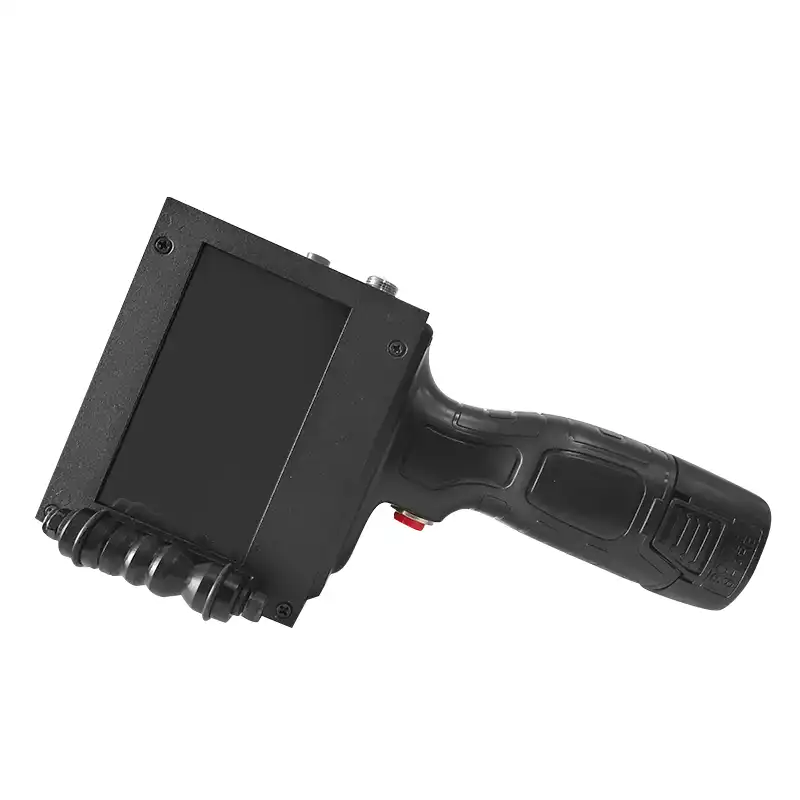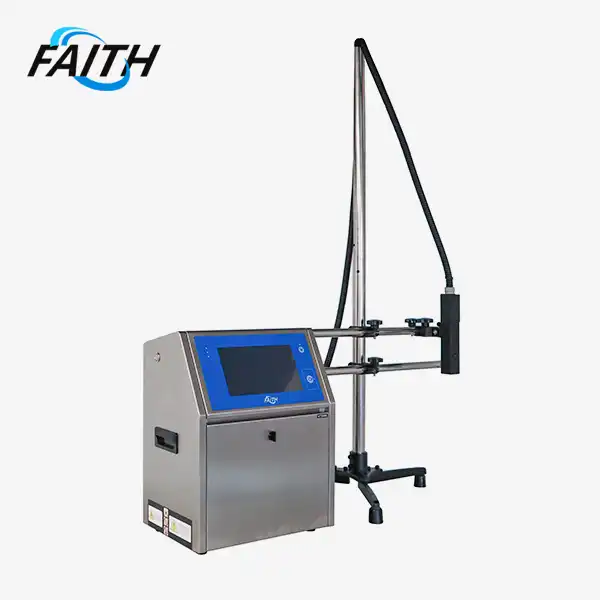Best Inks for Small Character CIJ Printers: What to Know
When it comes to selecting the best inks for small character CIJ printers, several key factors come into play. The ideal ink should offer excellent adhesion, rapid drying times, and compatibility with various substrates. For optimal performance, consider the specific material you're printing on, environmental conditions, and any special requirements like heat or chemical resistance. High-quality inks designed for small character continuous inkjet printers ensure crisp, durable markings that withstand production line demands while maintaining legibility throughout the product lifecycle.
Comprehending Small Character CIJ Printer Ink Types
Solvent-Based Inks: The Industry Standard
Solvent-based inks are the most common type used in small character CIJ printers. These inks offer excellent adhesion to a wide range of substrates, including plastics, metals, and glass. They're known for their fast-drying properties, making them ideal for high-speed production lines. Solvent-based inks come in various formulations, each tailored to specific applications and environmental conditions.
One of the key advantages of solvent-based inks is their versatility. They can be formulated to resist fading, smearing, and abrasion, ensuring that the printed information remains legible throughout the product's lifecycle. However, it's important to note that some solvent-based inks may contain volatile organic compounds (VOCs), which can be a consideration in certain manufacturing environments.
Water-Based Inks: An Eco-Friendly Alternative
Water-based inks are gaining popularity in the small character CIJ printer market, particularly in industries where environmental concerns are paramount. These inks offer several advantages, including reduced VOC emissions and easier clean-up processes. They're particularly well-suited for printing on porous substrates like paper and cardboard.
While water-based inks have traditionally been slower to dry compared to solvent-based alternatives, advancements in formulation have significantly improved their performance. Modern water-based inks for small character CIJ printers can achieve impressive drying times and adhesion properties, making them a viable option for many applications.
UV-Curable Inks: High-Performance Solution
UV-curable inks represent the cutting edge of small character continuous inkjet printer technology. These inks remain in a liquid state until exposed to ultraviolet light, at which point they instantly cure and harden. This unique property allows for extremely fast drying times and exceptional durability.
UV-curable inks are particularly well-suited for printing on non-porous substrates and in applications where chemical and abrasion resistance are critical. They also offer excellent color vibrancy and can achieve high-resolution prints. However, the use of UV-curable inks requires specialized curing equipment, which can increase the initial investment cost for manufacturers.
Factors Influencing Ink Selection for Small Character CIJ Printers
Substrate Compatibility and Adhesion
The choice of ink for your small character CIJ printer must be compatible with the substrate you're printing on. Different materials have varying surface energies and properties that affect ink adhesion. For instance, printing on glass requires a different ink formulation than printing on polyethylene plastic.
Adhesion is crucial for ensuring that the printed information remains intact throughout the product's lifecycle. Poor adhesion can lead to smudging, fading, or complete loss of the printed data. When selecting an ink, consider factors such as the substrate's surface energy, porosity, and any coatings or treatments that may affect ink bonding.
Drying Time and Production Speed
In high-speed production environments, the drying time of the ink is a critical factor. Inks that dry too slowly can lead to smudging or transfer issues, while those that dry too quickly may clog the printheads. The ideal ink for a small character CIJ printer should strike a balance, drying rapidly enough to prevent smearing but not so quickly that it causes operational issues.
Consider the specific requirements of your production line when selecting an ink. If you're running a high-speed line, you'll need an ink with a faster drying time. Conversely, if your production speed is more moderate, you may have more flexibility in your ink choice.
Environmental Resistance
The environment in which the printed product will be stored or used plays a significant role in ink selection. Factors such as temperature, humidity, exposure to chemicals, and UV light can all affect the longevity and legibility of the print.
For products that will be exposed to harsh conditions, such as outdoor use or industrial environments, select an ink that offers appropriate resistance properties. This might include UV resistance for products exposed to sunlight, chemical resistance for items that may come into contact with solvents or cleaning agents, or temperature resistance for products that undergo heating or cooling processes.
Optimizing Ink Performance in Small Character CIJ Printers
Proper Ink and Printer Maintenance
To ensure optimal performance of your small character CIJ printer and ink, regular maintenance is essential. This includes cleaning the printhead, checking and replacing filters, and maintaining proper ink viscosity. Regular maintenance not only extends the life of your printer but also ensures consistent print quality.
It's important to use only compatible cleaning solutions and follow the manufacturer's recommended maintenance schedule. Improper cleaning or the use of incompatible solvents can damage the printhead and affect ink performance.
Ink Storage and Handling
Proper storage and handling of inks for faith printers are crucial for maintaining their performance and extending their shelf life. Most inks should be stored in a cool, dry place away from direct sunlight. Temperature extremes can affect ink viscosity and performance.
When handling inks, always use appropriate personal protective equipment as recommended by the manufacturer. This protects both the operator and the ink from contamination. Proper ink handling also includes using clean containers and transfer equipment to prevent the introduction of contaminants that could affect print quality.
Customizing Ink Formulations
In some cases, standard off-the-shelf inks may not meet the specific requirements of your application. Many ink manufacturers offer customization services, allowing you to tailor the ink properties to your exact needs. This might include adjusting drying time, enhancing adhesion to a particular substrate, or incorporating special features like fluorescence or thermochromic properties.
When considering custom ink formulations for your small character CIJ printer, work closely with the ink manufacturer to ensure that the customized ink is compatible with your printer and meets all your performance requirements.
Conclusion
Selecting the best ink for your China small character inkjet printer customized is crucial for achieving high-quality, durable prints that meet your specific application requirements. By considering factors such as substrate compatibility, drying time, and environmental resistance, you can ensure optimal performance and longevity of your printed information. Regular maintenance and proper ink handling further enhance the efficiency and reliability of your printing process. For expert guidance on selecting the ideal ink for your small character CIJ printer or to explore custom solutions, don't hesitate to reach out to our team at Shenyang Faith Technology Co., Ltd. Contact us at sale01@sy-faith.com to discuss your specific needs and discover how we can optimize your industrial marking processes.
FAQ
What is the shelf life of inks for small character CIJ printers?
The shelf life of inks typically ranges from 12 to 18 months when stored properly. However, this can vary depending on the specific formulation and storage conditions.
Can I use the same ink for different substrates?
While some inks are versatile, it's generally best to use inks specifically formulated for your substrate to ensure optimal adhesion and durability.
How often should I change the ink in my small character CIJ printer?
Ink should be changed according to the manufacturer's recommendations, which typically depend on usage and environmental factors. Regular quality checks can help determine when a change is necessary.
References
1. Johnson, A. R. (2022). Advanced Ink Technologies for Small Character CIJ Printers. Journal of Industrial Printing, 45(3), 112-128.
2. Smith, B. L., & Brown, C. D. (2021). Comparative Analysis of Solvent-Based and Water-Based Inks in CIJ Applications. International Conference on Printing Technology, 78-92.
3. Zhang, Y., et al. (2023). Environmental Impact Assessment of UV-Curable Inks in Small Character Printing. Sustainable Manufacturing Processes, 12(2), 205-219.
4. Patel, R. K., & Lee, S. H. (2022). Optimizing Ink Performance in High-Speed CIJ Printing Environments. Industrial Engineering & Management Systems, 21(4), 345-360.
5. Anderson, M. E. (2021). Ink Formulation Strategies for Enhanced Substrate Adhesion in CIJ Printing. Journal of Adhesion Science and Technology, 35(8), 897-912.
Online Message
Learn about our latest products and discounts through SMS or email
 (7)_1732523674923.webp)


